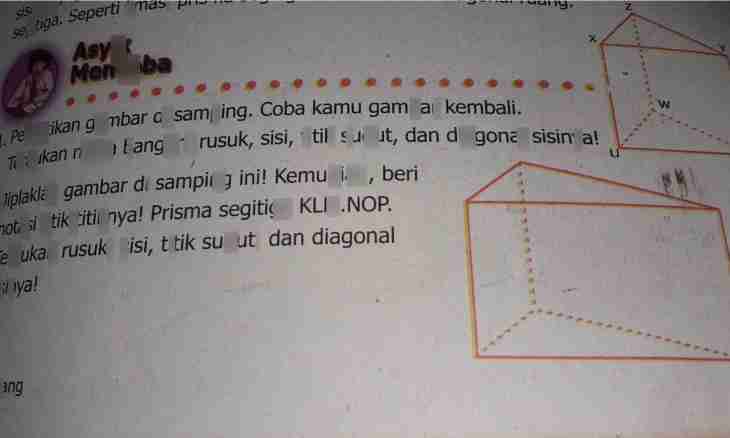Diagonal connects non-adjacent tops of a polygon which number of the parties not less than four. Calculate this size through initial or intermediate these tasks, using the corresponding formulas.
Instruction
1. In any closed geometrical figure consisting not less than of four pieces it is possible to carry out at least two diagonals. So many diagonals can have a quadrangle: parallelogram, rectangle, rhombus and square.
2. Find parallelogram diagonals if it is known that one of them is more another on 1, and lengths of the parties are equal to a=5 and b=7. In this respect in geometry there is a ready formula according to which the sum of squares of lengths of diagonals is equal to the doubled sum of squares of the parties: d1² + d2² = 2 • (a² + b²) = 2 • (25 + 49) = 148.
3. Substitute d2=d1+1: d1² + (d1+1)² = 148 2•d1² + 2•d1 + 1 = 148.
4. Solve the following equation of rather unknown d1:2 • d1² + 2•d1 – 147 = 0D = 4 + 4•2•147 = 1180d1 = (-2 + √1180)/4 ≈ 8.1 → d2 = 9.1.
5. The formula for a rectangle becomes simpler as its diagonals are equal among themselves: 2 · d² = 2 • (a² + b²) = 2 • (25 + 49) = 148 → d² = 74 → d ≈ 8.6.
6. In case of a square the situation is even more simply, its diagonals not only have equal length, but also are directly proportional to the party: 2 · d² = 4•a² → d² = 2•a² → d = √2•a = [a=5] = √2•5 ≈ 7.
7. A rhombus – a special case of a parallelogram with the equal parties, however unlike a square of diagonal are not equal among themselves. Let's assume that the party of a rhombus of a=5, and length of one of diagonals is equal to 3. Then: d1² + 9 = 4•25 → d1 = 9.
8. Diagonals can be carried out not only in a flat figure, but also in spatial. For example, in a parallelepiped. The square of length of diagonal of a rectangular parallelepiped (or its special case - a cube) is equal to the total size of squares of three of its dimensions. Measurements are called the edges having one general top.
9. Diagonals has no triangle and its three-dimensional option – a tetrahedron as they have no non-adjacent tops. The number of diagonals in any n-polygon can be determined as follows: nd = (n² – 3•n)/2.
